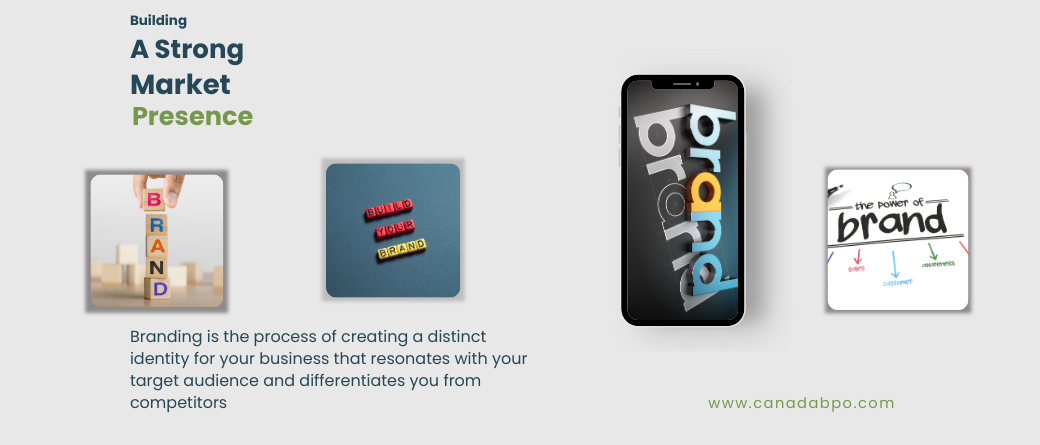Establishing a unique and memorable brand is crucial for business success. Understanding and implementing an effective brand positioning strategy is key to differentiating your brand from competitors and capturing the attention of your target audience. In this blog post, we’ll explore the concept of branding, delve into brand positioning strategy, and provide insights on how to build a strong market presence.
Understanding Branding
Branding is the process of creating a distinct identity for your business that resonates with your target audience and differentiates you from competitors. It encompasses everything from your company’s name, logo, and visual elements to the emotional and psychological associations that customers have with your brand.
Key Elements of Branding
- Brand Identity: This includes your company’s name, logo, colors, typography, and overall visual style. A strong brand identity helps create a recognizable and cohesive image.
- Brand Voice: The tone and style of communication used in your marketing materials. It should reflect your brand’s personality and resonate with your audience.
- Brand Values: The core principles and beliefs that guide your company’s actions and decisions. These values should align with the expectations and aspirations of your target audience.
- Brand Experience: The overall experience customers have with your brand, including interactions with your products, services, and customer support. Positive experiences reinforce brand loyalty and trust.
What is Brand Positioning?
Brand positioning refers to the strategic process of defining how your brand is perceived in the minds of your target audience relative to competitors. It involves identifying a unique value proposition that sets your brand apart and communicates why customers should choose you over others.
Key Components of Brand Positioning
- Target Audience: Clearly define your ideal customers based on demographics, psychographics, and behaviors. Understanding your target audience helps tailor your positioning to meet their specific needs and preferences.
- Competitive Analysis: Analyze your competitors to identify their strengths, weaknesses, and positioning strategies. This information helps you find gaps in the market and opportunities for differentiation.
- Unique Value Proposition (UVP): Develop a compelling UVP that highlights the unique benefits and advantages of your brand. Your UVP should address the specific needs and pain points of your target audience.
- Brand Promise: Articulate the promise you make to your customers regarding the value and experience they can expect from your brand. Your brand promise should be authentic and consistently delivered across all touchpoints.
- Brand Positioning Statement: Create a concise and clear positioning statement that summarizes your brand’s unique position in the market. This statement should communicate who you are, what you offer, and why you’re the best choice.
Developing an Effective Brand Positioning Strategy
To build a strong brand positioning strategy, follow these steps:
1. Conduct Market Research
Gather insights about your target audience, competitors, and industry trends. Use surveys, focus groups, and data analysis to understand customer needs, preferences, and perceptions.
2. Define Your Brand’s Unique Attributes
Identify what makes your brand unique and how it addresses the needs of your target audience better than competitors. Focus on attributes that align with your brand values and resonate with your audience.
3. Craft a Compelling Brand Story
Develop a brand story that connects with your audience on an emotional level. Your story should reflect your brand’s mission, values, and vision, and help build a deeper connection with customers.
4. Communicate Consistently
Ensure that your brand positioning is consistently communicated across all channels and touchpoints. This includes your website, social media, advertising, packaging, and customer interactions.
5. Monitor and Adjust
Regularly assess the effectiveness of your brand positioning strategy. Gather feedback from customers, track brand performance metrics, and make adjustments as needed to stay relevant and competitive.
Examples of Successful Brand Positioning
- Apple: Apple positions itself as a premium brand offering innovative, high-quality products with a sleek design. Its positioning emphasizes simplicity, elegance, and cutting-edge technology.
- Nike: Nike’s positioning focuses on empowerment and performance, using the tagline “Just Do It” to inspire and motivate athletes of all levels. Nike’s branding emphasizes excellence and determination.
- Tesla: Tesla positions itself as a leader in sustainable and high-performance electric vehicles. Its branding highlights innovation, environmental consciousness, and advanced technology.
A well-defined brand positioning strategy is essential for standing out in a crowded market and building a strong connection with your target audience. By understanding the concept of branding, identifying your unique value proposition, and communicating consistently, you can create a compelling and memorable brand presence.
At Canada BPO Services, we specialize in helping businesses develop and execute effective brand positioning strategies. Whether you need assistance with market research, brand development, or positioning strategy, our team is here to support you. Contact us today to learn more about how we can help you build a powerful brand and achieve your marketing goals!










